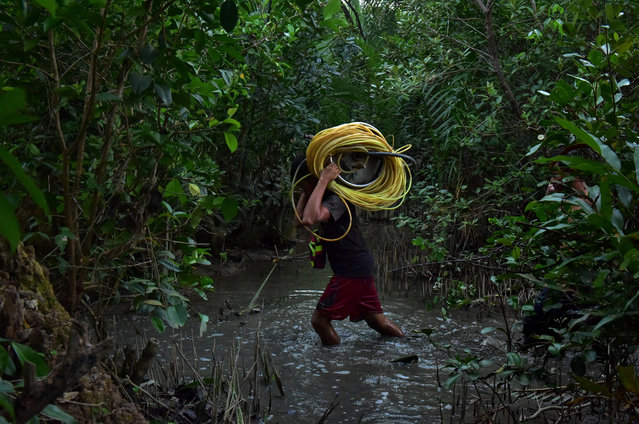
A small-scale miner carrying plastic tubes used for breathing while looking for gold under the mud on March 22, 2017 in Paracale, Philippines. In the mining town of Paracale, about 350 kilometers south of Manila, a day's work of digging and sifting through hundreds of kilos of sand and clay, an artisanal miner can gather about a quarter of a gram of gold dust, enough to earn $5, enough for a family to go through the day's needs. For decades, local residents at Paracale town work in hazardous conditions scavenging under the earth and diving into tunnels filled with mud using only makeshift tools to mine for gold, often placing their health and lives at risk. Ban Toxics, a local NGO working at these sites claims that artisanal mining is a poverty driven industry and that small-scale miners typically work in harsh conditions with no proper training, protection, and pollution control methods. Local reports indicated the country produced about 18 tons of gold at a market value of over $700 million in 2014 while 80% of the gold comes from artisanal and small-scale mines which operate without a government license. The Philippines holds the largest copper-gold deposit in the world and is the fifth most mineral-rich country for gold, nickel, copper, and chromite, but massive environmental destruction prompted the new Department of Environment and Natural Resources secretary, Gina Lopez, to threaten many large-scale mining operations for closure. (Photo by Jes Aznar/Getty Images)
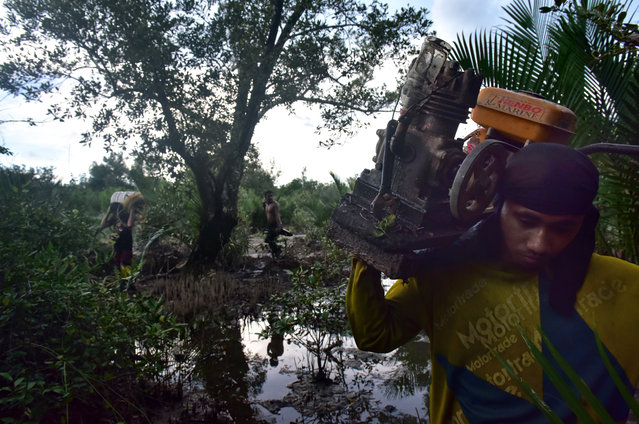
A local artisanal miner carrying an air compressor used for mining under the mud on March 22, 2017 in Paracale, Philippines. Apart from tunneling and sifting sand, locals dive down murky swamps with the aid of a compressor with air flowing in a small tube for breathing, as they blindly swim under the mud for up to four hours to look for tiny rocks containing gold particles. For decades, local residents at Paracale town work in hazardous conditions scavenging under the earth and diving into tunnels filled with mud using only makeshift tools to mine for gold, often placing their health and lives at risk. (Photo by Jes Aznar/Getty Images)
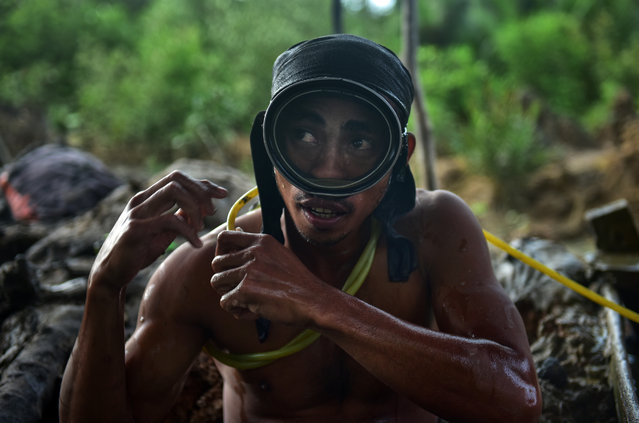
Anthony Balderosdasco, 28, readies himself to dive down beneath the mud to look for gold on March 22, 2017 in Paracale, Philippines. (Photo by Jes Aznar/Getty Images)
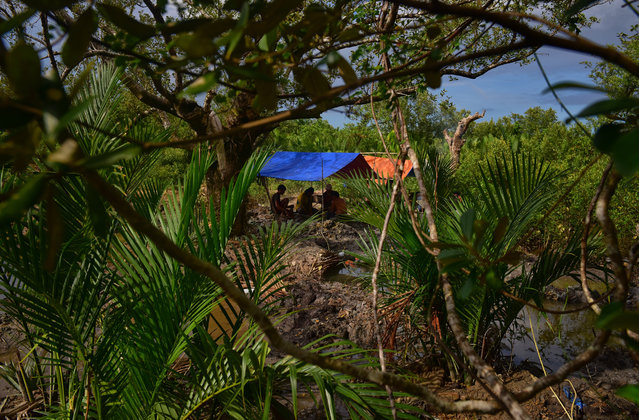
The Balderosdasco family setup their mining pit in the middle of as swamp on March 22, 2017 in Paracale, Philippines. (Photo by Jes Aznar/Getty Images)
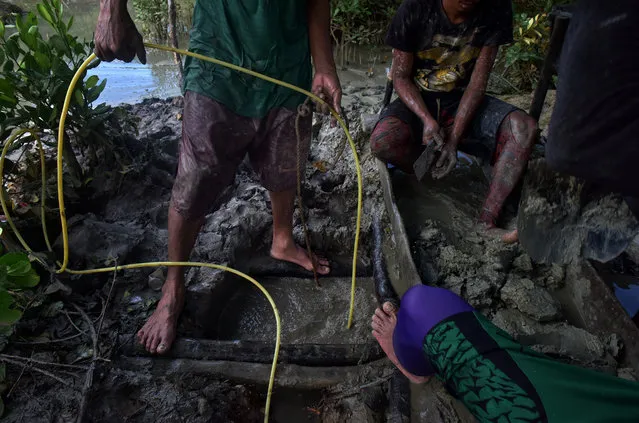
An air tube is being tethered down under the mud to give air to a diver on March 22, 2017 in Paracale, Philippines. (Photo by Jes Aznar/Getty Images)
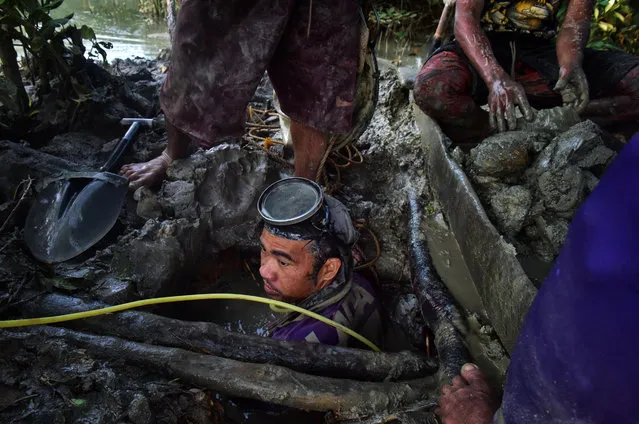
Christian Balderosdasco, 31, is being pulled up a mud pit after diving for 3 hours to look for gold on March 22, 2017 in Paracale, Philippines. (Photo by Jes Aznar/Getty Images)
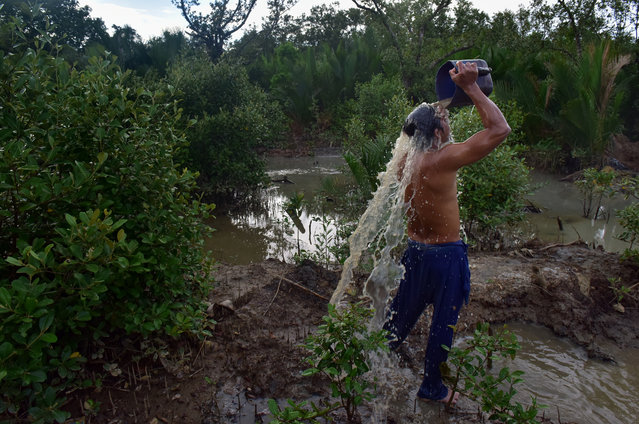
Christian Balderosdasco, 31, cleans himself up after diving beneath the mud for a whole day to look for gold on March 22, 2017 in Paracale, Philippines. (Photo by Jes Aznar/Getty Images)
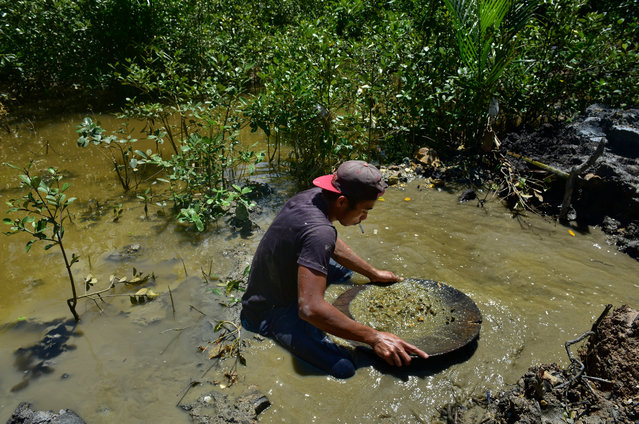
A local small scale miner panning mud to extract minute particles of gold in a pan on March 22, 2017 in Paracale, Philippines. (Photo by Jes Aznar/Getty Images)
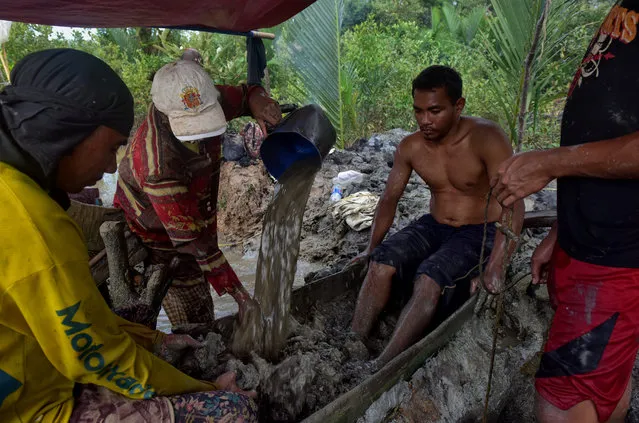
The Balderosdasco family manually dissolving mud with their feet and hands to look for gold on March 22, 2017 in Paracale, Philippines. (Photo by Jes Aznar/Getty Images)
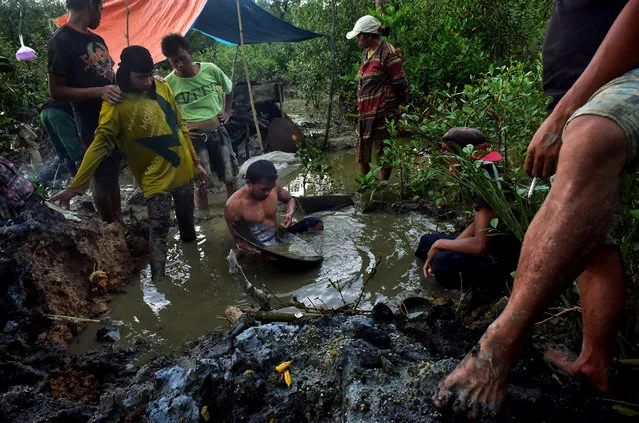
A local small scale miner panning mud to extract minute particles of gold in a pan on March 22, 2017 in Paracale, Philippines. (Photo by Jes Aznar/Getty Images)
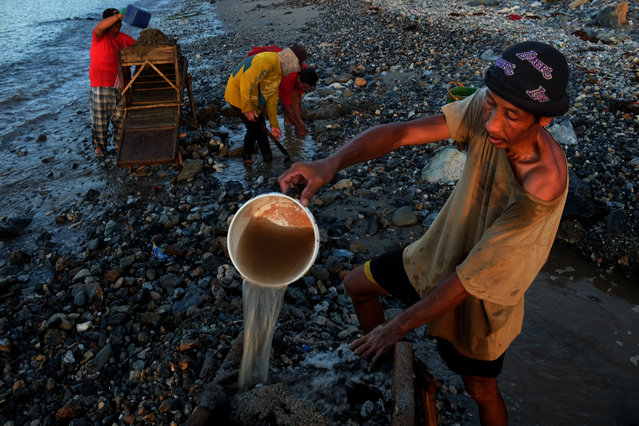
A family digs and sifts sand to look for gold on March 23, 2017 in Paracale, Philippines. (Photo by Jes Aznar/Getty Images)
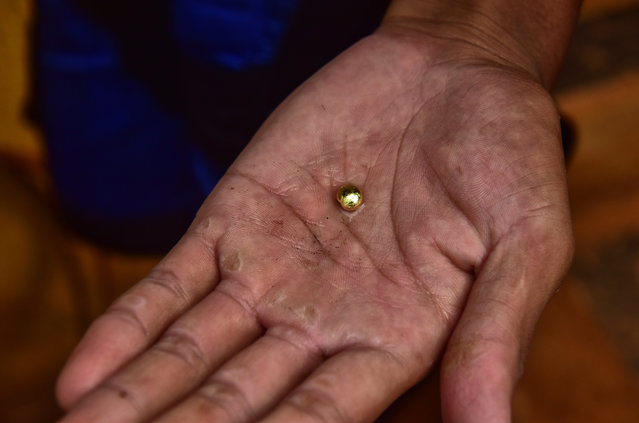
A resident digs and sifts sand to look for gold on March 23, 2017 in Paracale, Philippines. (Photo by Jes Aznar/Getty Images)
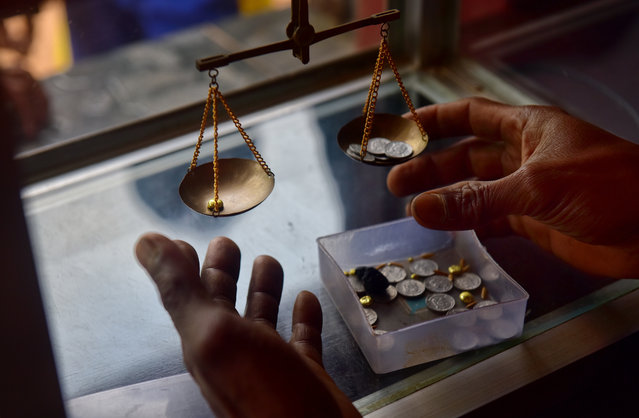
A local buyer weighing gold that was brought in by small scale miners on March 22, 2017 in Paracale, Philippines. (Photo by Jes Aznar/Getty Images)
06 Apr 2017 09:21:00,
post received
0 comments
